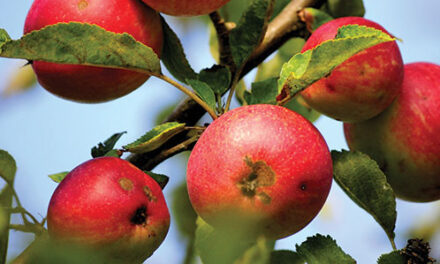As Halloween is just around the corner, there will be goody bags filled with candy galore, and carb-based comfort foods crowding the countertops waiting to be devoured. Since such carbohydrates are here to stay, perhaps it is time to “make nice” with these sweet and savory frightfully feared carbohydrate based foods and start eating the right ones the right way?
It is clear by trending popularity that the low-carb diet is the common approach for short and rapid weight-loss; claiming to promote [such] weight loss, improving blood cholesterol levels and blood pressure.1 However, when looking at the long-term effects of low-carb dieting, such a lifestyle can be everything but favorable. For example, Nurses’ Health Study and Health Professionals’ Follow-up 26 Study shows that: Both men and women who had higher overall and animal low-carbohydrate scores had higher BMI and more likely to be current smokers, but lower intakes of fruits and vegetables.2
However, carbohydrates are the major source of energy in our diet3 performing countless functions within the body. They are crucial for optimal metabolic functioning, and when not provided with such carbohydrates, our bodies have developed numerous pathways to synthesize them despite the dietary consumption.4 When the body is deprived of low-carbohydrate consumption, the body readily switches to alternative fuel sources to preserve what glucose it has left for brain consumption. It will willingly catabolize it’s proteins and fats to supply any needed glucose5 so that the body will continue to function. Thus, it is imperative we provide our bodies with a sufficient amount of, and the proper types of, carbohydrates for optimal bodily function.
The building blocks of all carbohydrates are sugars and can be classified according to how many sugar units are combined in one molecule.6 The more sugar units needed dramatically changes the source of carbohydrates, and rightly so. For example, table sugar, fruits, berries, vegetables, honey and glucose-fructose syrups are examples of sugars with one to two sugar units, categorized as monosaccharides and disaccharides. Oligosaccharides are carbohydrates formed of 3–9 sugar units (monosaccharides), fructo-oligo containing 9;7 these carbohydrates can be grains, vegetables and honey. Polysaccharides are ten or more sugar unit combinations, which are mainly sources of starches from root vegetables and cereals; and non-starch polysaccharides are dietary fiber carbohydrates.8
One can get overwhelmed by the above complexity; so, let’s take a step back and look at the benefits. From the above paragraph, one can see there are simple and complex carbohydrates based on the amounts of sugar units. Generally, one can conclude that simple carbohydrates are based on fewer sugar units, quickly absorbed into the body for a fast energy release; and complex carbohydrates are based on larger amount of sugar units, digesting at a slower rate for more sustainable energy use.
Carbohydrates can be divided into three types: sugars, starches, and fibers. Each type of carbohydrate has a specific function and benefit for the body.
The first type, sugar based carbohydrates, are used for quick energy use in the body. That is why when diabetics and hypoglycemics are in need of energy and insulin regulation, they often eat simple sugar carbohydrates such as honey, watermelon and orange slices, otherwise known as sugar. The body can quickly metabolize the sugar and regulate the blood sugar levels, bringing the body back to homeostasis. Blood sugar regulation is a key role in weight management and proper body function. It is important to make sure that energy and blood sugar levels are stable so that the body can maintain homeostasis and optimal health. Whether that is defined as the need to lose, gain or maintain weight, it is carbohydrates that play the major role in such maintenance, and sugar based carbohydrates are wonderful sources of quick energy, providing energy for daily activities in and around the house, from chasing the children after school to a meditative yoga class before bed.
The second type of carbohydrate is starch. Starches are the most common source of dietary carbohydrate in the world,11 ranging from roots to cereals grains. It serves as an important function as a readily metabolized energy source during times of stress.12 That is why a marathoner might choose a more starch-based carbohydrate before a run so the body can have prolonged and slow released carbohydrates while his or her body is under the stress of running many miles. These starchy carbohydrates are a great source of energy for the body, maintaining homeostasis in regards to blood sugar levels, glucose levels, and of course, energy levels.
The third type of carbohydrate is fibrous carbohydrates. These can be found in fruits, vegetables and starchy carbohydrates. Two types of fiber are insoluble and soluble, with most fiber-containing foods containing about one-third soluble and two-thirds insoluble fiber. As fiber is the indigestible carbohydrate component of food, there is no nutritional benefit to fiber; however, it is essential in proper and optimal function of the human body. Fiber aids in healthy digestion, regulating the digestive system while also aiding the intestines in the defense of germs. Depending on the type of fiber, it can also interact with the digestive system to change which nutrients and chemicals are absorbed, even changing the chemical composition of the compound itself. Fibers also act as prebiotics in the gut. They can enhance mineral absorption, suppress bacterial infections, and produce digest enzymes, reduce intestinal acidity and more.13 The best source of such fibers can be found in plants, the fibrous soluble portion being cellulose. When the doctor says eat more roughage like the rabbits, he or she is referring to vegetables; and the doctor is right! Vegetables are high in fiber, mainly low in calories and have a rich nutritional profile. Green leafy vegetables are considered low in caloric value but quite valuable in vitamins and minerals. They are an excellent source of carbohydrate!
Learn healthy, fun and quick ways to cook carbohydrates this fall from raw to roasting, and forget the fear surrounding them. It’s more about healthy choices within your comfort zone versus the quick sugary candies and calorically dense comfort foods of fall. Rather, grab a fruit or a sweet potato instead, something with a dense nutritional profile and an explosive great taste! Remember that carbohydrates are the preferred source of energy for the body; so don’t be afraid eat some if you trick or treat this fall. You will want to be sure to have enough quick yet sustainable energy to run after those little ghouls and ghosts!
References:
- http://www.ncbi.nlm.nih.gov/pmc/articles/PMC2989112/.
- IbId.
- IbId.
- Performance Nutrtion & Sports Supplement Coach Certification Course Manual by Vince Andrich and Adel Moussa. Sports Nutrition Media Group LLC. P 74. 2014.
- IbId.
- http://www.eufic.org/article/en/expid/basics-carbohydrates/
- Ibid.
- Ibid.
- Nutrition Coach Foundations 3rd Ed. Venice Nutrition. 2014. P 276.
- Ibid.
- Performance Nutrtion & Sports Supplement Coach Certification Course Manual by Vince Andrich and Adel Moussa. Sports Nutrition Media Group LLC. P 77. 2014.
- Ibid.
- Performance Nutrtion & Sports Supplement Coach Certification Course Manual by Vince Andrich and Adel Moussa. Sports Nutrition Media Group LLC. P 87. 2014











